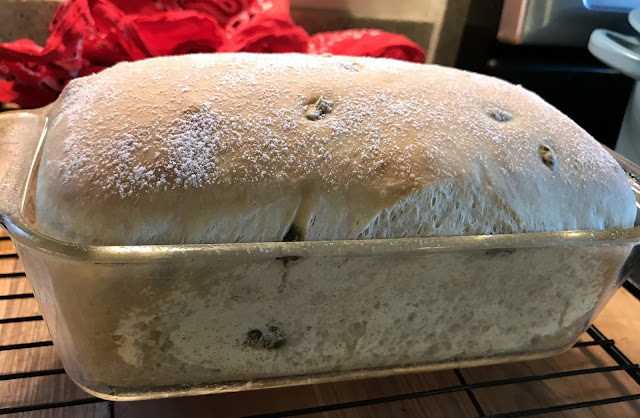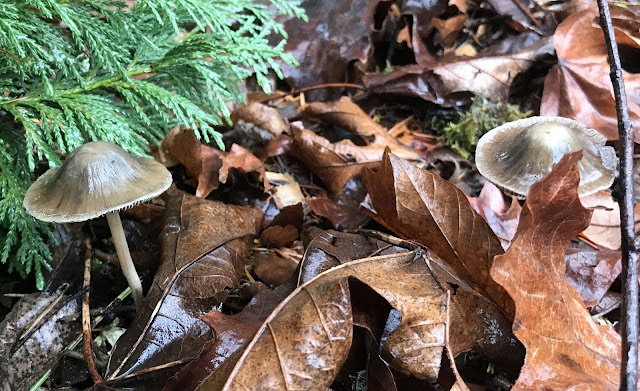I've been wanting to add some Honeycrisp to the young Winecrisp (plus Milo Gibson plus Sweet-16) tree, so here it is. I also haven't liked the Rubinette branch on another multigraft (originally Rubinette + Queen Cox + Pristine, but now with a deer-damaged King David + Dolgo + Goldrush + a puny Hawkeye branch). Rubinette is reputed to be among the best tasting of all apples, but in my hands the apples are misshapen and disease magnets, while other varieties on the same tree are fine. So I did some pruning and added Prima, another King David to replace the deer damaged branch, and Fameuse. I also had a rootstock taken from an underground sucker off an old semidwarf tree, and grafted Fameuse scion onto that as well.
Over the years, I've dispensed with using wax or Tree-Kote on apple grafts. I've seen some videos shoing grafters using ribbons cut from plastic bags, which worked well for me last year. It takes some practice to stretch them tightly around the graft union without displacing the graft, but once in place the plastic ribbons make a tight bandage for the union to heal nicely. I also wrap the entire scion, but not as tightly. I do have to watch for growth, so the plastic does not restrict new growth and expansion.
For the cut, I use a Felco grafting knife. A lot of modern grafters like using box-cutter utility knife, which can result in a clean sharp blade each time. I see the attraction but stick to my old Felco.
I cut tags from roadside beer can discards. I rinse them with lysol in case the people who generously provide the cans (by throwing them out of their cars) have some sort of communicable disease, then cut with kitchen shears and use a paper punch to cut a hole. I fassten them to the branch, using a loose zip tie. I watch the tree so growth is not girdled later when the branch expands. That's not a problem. I putter around these trees all of the time.
These labels work as well as any mail order label. I use a ball point pen to emboss the name of the cultivar and date of the graft.
Prima is a Purdue-Rutgers-Illinois hyrid, originally bred to be scab resistant although scab has evolved past that property; best eaten fresh. Per Fedco, resistant to Fireblight, cedar apple rust, and mildew.
King David is an older variety, info here is from Fedco: "thought to be to Jonathan x Arkansas Black... 1893. Intensely flavored... Pineapple, tangerine, lemon, sweet, sour, tart, sharp, aromatic and spicy all rush around simultaneously. The medium-sized roundish fruit is very dark solid maroon—nearly black. The fine juicy flesh is firm yet tender and distinctly yellow."
I already had Honeycrisp on M27 rootstock, which restricts growth so much it's never been more than 2 feet tall and has had, maybe, one apple in 5 years. So I'm trying it on a larger growing multigraft semi-dwaf size tree.
Fameuse is also known as Snow. I already have a graft of Fameuse on another tree, but it doesn't amount much yet and I want to give it a good chance. Fedco describes Fameuse as originating in Quebec before 1700. "The 1865 Department of Agriculture yearbook sums it up: “Flesh remarkably white, tender, juicy"…deliciously pleasant, with a slight perfume… Medium-small roundish ruby-red thin-skinned fruit." and possibly a parent of McIntosh.


















































